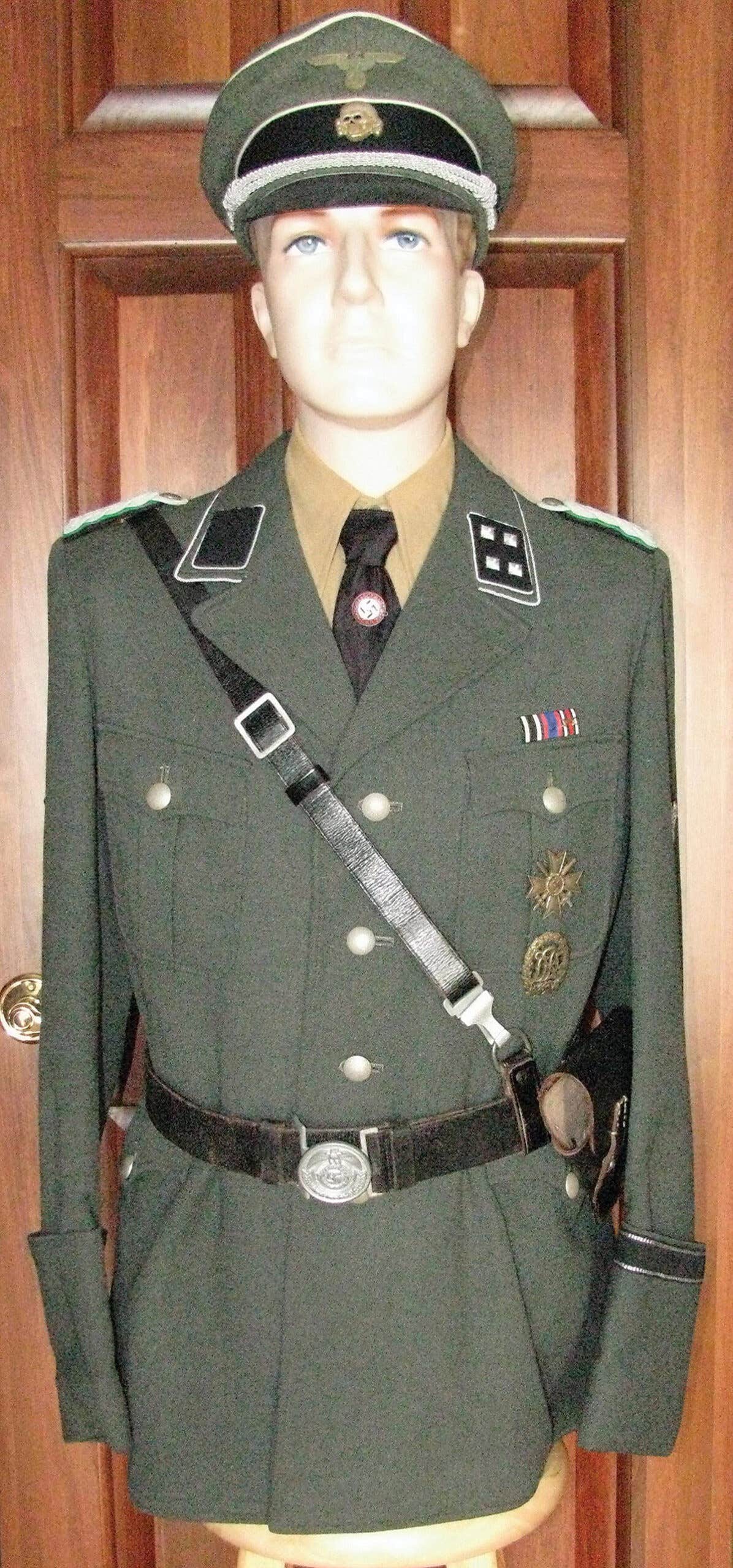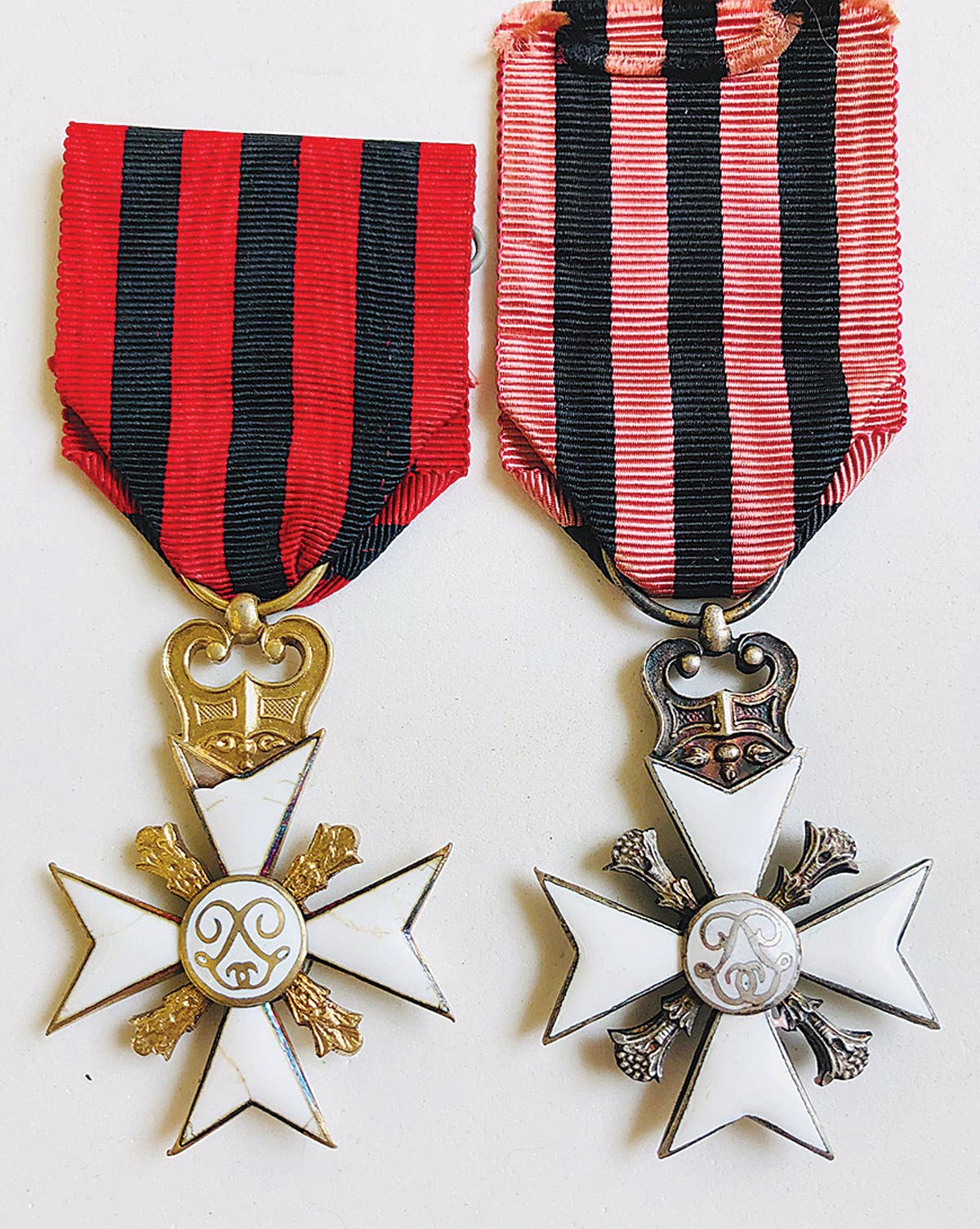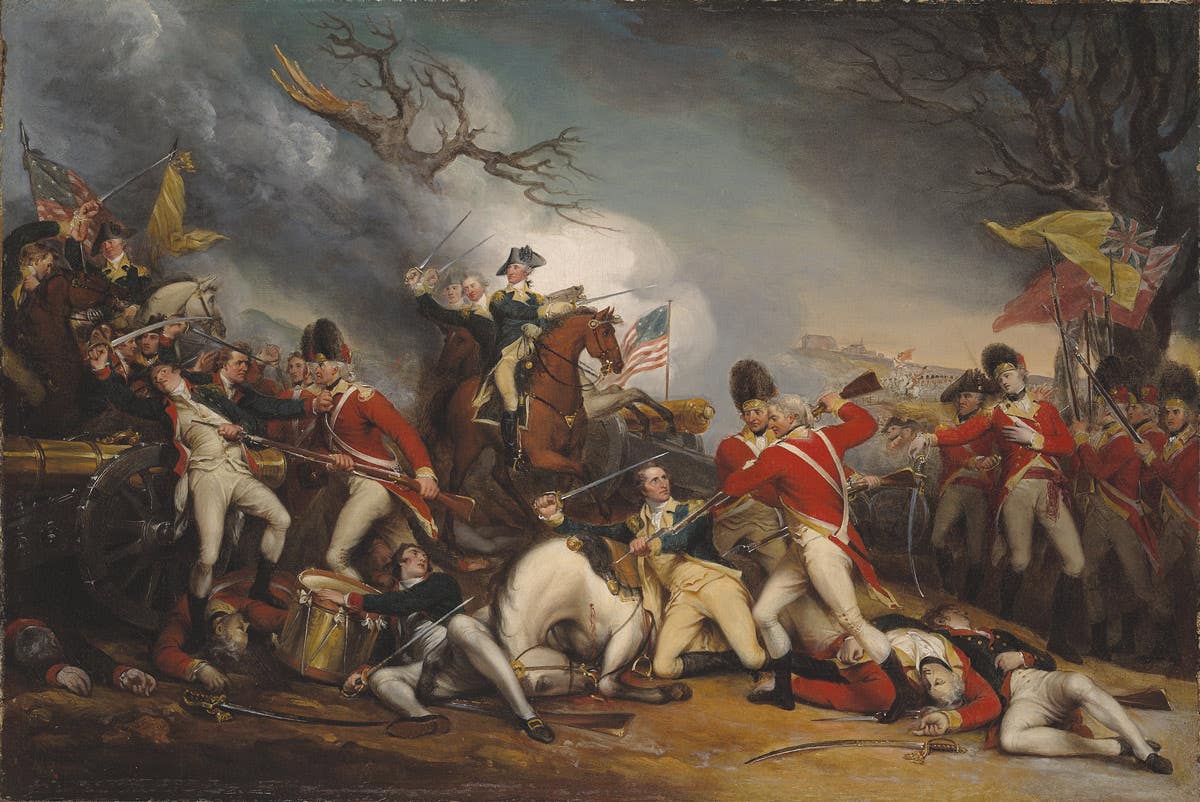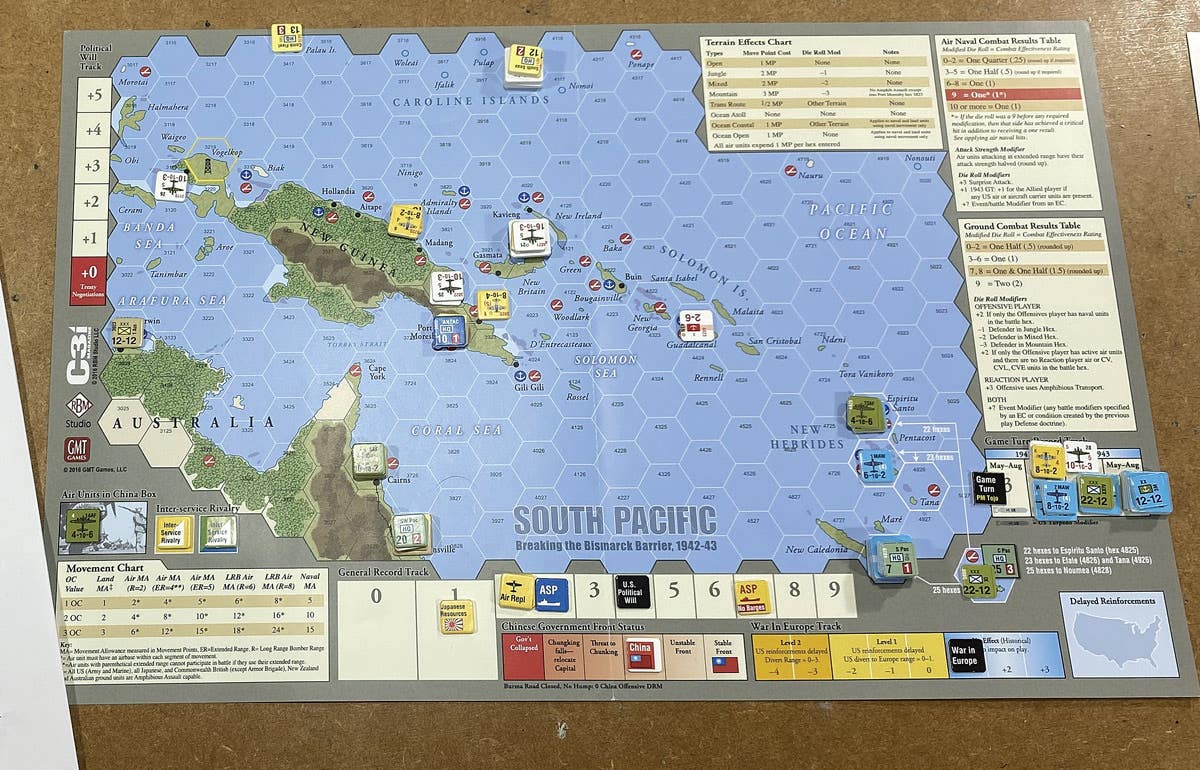Skulls & Eagles
A survey of SS headgear by Chris William When the Nationalsozialistische Deutsche Arbeiterpartei (NSDAP — Nazi party) began its rise to power during the Weimar era of Germany, Adolf Hitler…
A survey of SS headgear
by Chris William
When the Nationalsozialistische Deutsche Arbeiterpartei (NSDAP — Nazi party) began its rise to power during the Weimar era of Germany, Adolf Hitler formed a tight-knit group of trusted body guards to provide personal protection for both himself and the other party dignitaries. This assembly of hard core fanatics grew into what was later known as the dreaded Schutzstaffel (protection echelon — the SS). These brutal street fighters wore distinctive headgear when stationed on crowded avenues or in lecture halls.
The first style of headgear the SS men adopted was the SS Dienstmutze (SS service cap). The gray cloth “ski cap” without a chinstrap was first worn in 1923. By 1925, ablack round “coffee can-shaped” model, usually made of wool with a leather bill and chin strap, replaced the gray cap. Features such as ventilation grommets and front flap closure buttons varied by manufacturer, as did interior labels and sweatbands.
The front panel of the new headgear bore a national color cockade of black, silver and red mounted over a jawless Totenkopf (death’s head) badge. Though not invented by the SS, the death’s head was favored as an SS symbol very early, Styled after those worn by the 19th century Prussian hussars, the Totenkopf was a sign of fidelity.
In 1929, the SS service cap was updated with the addition of a standardized leather chinstrap. At the same time, a Nazi party eagle and wreath encircling a swastika device replaced the cockade. Top ranked leaders (such as Heinrich Himmler) began to wear piping on their caps to designate their elevated positions. In the early 1930s, piping was added to the kepis for the lesser ranks.
Late in 1932, the Neuer Art (new form) of SS cap appeared. This modernized version was similar to those used by the German military. The new visor cap could be obtained with a either Sattelform” (saddle-shaped top) or Tellerform (saucer- shaped top). The body of the cap was made of black wool (or of finer material for officers) with white piping around the wire- reenforced crown rim as well as above and below the black cloth cap band. A high gloss leather (later fiber) visor ran along the face of the cap. Above it rested a buckled leather chin strap secured on each side with a black metal button (those in leadership positions substituted a silver cord chinstrap for the leather). The same eagle, swastika, and death’s head devices were attached to the front panel of the cap, givingthe wearer a particularly menacing appearance.
Besides the black visor caps worn by the Allgemeine (general) SS, white summer visor caps were produced for a very short period of time. They wereavailable for less than one year before their manufacture was ended in 1940.
In 1933, the Reichszeugmeisterei (RZM — National Material Control Office) began standardizing the materials and specifications of SS cap production. The office issuedcontrol numbers to qualified manufacturers that followed their guidelines. These authorized companies attached RZM tags to the inside sweatbands and under the SS-marked plastic shields found on the rust-colored crown linings of caps. In addition, many makers applied SS/RZM ink stamps to the brown underside of cap visors.
RZM markings can be found on the older coffee can-style caps that were manufactured at this time up to the end of their production in 1939.
In 1934, a more anatomically correct skull with added jawbone replaced the earlier, jawless death’s head insignia for head gear. Two years later, in 1936, all SS members were authorized to wear a redesigned SS-Hoheitszeichen (SS national emblem) on their caps. The new insignia consisted of a robust, straight-winged eagle over a wreath enclosing a swastika.
At the same time when the new insignia was introduced, a new, soft cap without a visor was made available. The black wool “overseas” cap were intended to be worn while on field exercises. The cap sported a new cloth, SS eagle emblem sewn onto the side flap and a silver colored death’s head skull button attached to the front rim.
The Allgemeine SS wore helmets for two distinct reasons: First, in order to protect the SS men during the early days of political struggle when they participated in the violent street battles, and secondly, for ceremonial display during parades, guard duty, and special events. Early SS helmets were surplus WW1 Army shells painted black with national color and Siegrune SS shields affixed to opposite sides. When the German military adopted a newer style helmet, the M35, the Allgemeine SS procured and modified them into SS helmets to be used primarily for parade or guarding purposes.
CAPS FOR THE SS-TV, SS-VT, AND WAFFEN SS
In 1933 the SS created SS-Totenkopfverbände” (SS-TV death’s head units) to manage the growing concentration camps,followed by the establishment of the “SS-Verfügungstruppe” (SS-VT; disposition troops) in 1934 as the combat arm of the NSDAP.
Though some SS men wore gray caps during field exercises, a new earth gray series of both the visor caps and the visor-less field caps (along with new uniforms) were issued to the SS-TV and SS-VT members. This was done to demonstrate their superior status to that of the general SS, and to give them an appearance that corresponded to the soldiers of the regular army.
Initially, the construction style of these new gray caps was identical to their black counterparts. This quickly changed as the SS-TV and SS-VT evolved into the nucleus of the Waffen SS (armed SS) after proving their ferocity in battle during the initial marches across Europe.
A typical Waffen SS NCO wore an updated gray visor field cap that featured a black cap band on a gray body, a material or leather visor, and no chin strap. The Death’s head insignia wasaffixed to the hat band and the eagle-swastika emblems mounted above. These were made of either silver-colored metal or were machine-woven patches.
By 1939, leather chinstraps became standard, as were leather visors for both NCO’s and enlisted men. The following year, piping colors were changed on NCO and enlisted visor caps to match their branch of service (white for infantry, red for artillery, etc.), but this was discontinued after less than one year, reverting back to white piping only.
Field caps for Waffen SS enlisted and NCO’s changed in 1940 to the style that would remain in use until the end of the war. These werecut from gray material in the same style as Luftwaffe caps. Insignia on each of these caps consisted of cloth 1936 straight-winged eagle mounted below the peak and above a cloth 1934-style death’s head skull. SS members of Panzer divisions wore the same style cap that were produced from black material to match their black uniforms.
The no-nonsense Einheitsfeldmutze (M-43 cap) issued to SS combat troops in 1943 resembled the ski caps used for many years in the mountains of Europe. With a gray, soft-billed body, the cap had fold down flaps (buttoned at the front when not in use) that could protect the wearer’s ears and neck during inclement weather. The eagle, swastika, and skull insignia were sewn to the front, or in a front and side flap combination as separate pieces. Later on, they were combined on a single triangle which was attached to the cap by being sewn and folded at the top. Men in Panzer units wore the M-43 caps in black rather than gray materials. M-43 caps were also produced from camouflage material and in tan colored material or tropical areas.
Some styles of caps quickly found their way into and out of the SS fields of operation. Initially, Panzer units wore black padded berets while operating their armored vehicles. The crews found these to be cumbersome and replaced them with the standard black field caps. Pith helmets, complete with national and SS side shields, were issued for soldiers to protect them from the burning desert or tropical sun. They too were unpopular and were usually replaced with either the lighter weight summer service caps or M-43s.
As non-Germans filled the depleted SS combat ranks, unity was enhanced among the recruits from specific ethnic regions by developing traditionally inspired SS headwear. The most distinctive ethnic-influenced SS headgear werethe Croatian “Kama” conical caps (fezzes) worn by the Croatian “Handschar” Division.
Waffen SS officers wore visor caps constructed of better quality gray body materials with black headbands and white or silver (for higher ranks) piping. Visors were constructed of glossy fiber with chin straps of aluminum cord. Death’s head and national emblems were made of silver colored or aluminum painted metal.
Officer’s field caps were cut the same as those of enlisted men, but again, produced from higher quality materials. In addition, they were piped around the folding rim, and could be fronted with bullion national eagles instead of woven or metal types. M-43 caps, which were very popular with officers, took the same form as their enlisted counterparts, but usually embellished with piping around the top edge of the crown.
Because of inadequate supplies, it was not unusual to find officers’ and enlisted men’s visor caps with outdated or incorrect insignia (such as army visor eagles) substituted for the authorized badges. Many soldiers removed the wire crown stiffeners to give the cap and wearer a more adventurous look even though this practice was strictly forbidden by SS regulations.
Waffen SS helmets, starting with the M-35 and ending with the M-42, were produced in the same configurations as the military helmets used by other soldiers of the German armed forces. These helmets would often have a single SS decal on one side accompanied by a national shield on the opposite side. Finished with heavy leather chin straps and liners, thousands of SS helmets went into battle, only to be destroyed along with their zealous owners who fought for the Nazi doctrines.
When Hitler’s regime was finally crushed, the SS received the blame for the countless atrocities committed both before and during the war. Because of this, much of the headgear, uniforms , and other pieces of regalia associated with the SS was quickly destroyed by their original owners, vengeful civilians, or the conquering allied troops who had learned to hate them and their unjustified cause. Today, the headgear, uniforms, and relics that survived serve as testaments to this very dark chapter of military history.
Chris William has been a long-time member of the collecting community, contributor to Military Trader, and author of the book, Third Reich Collectibles: Identification and Price Guide.
"I love to learn new facts about the world wars, and have had the good fortune to know many veterans and collectors over the years."
"Please keep their history alive to pass on to future generations".







